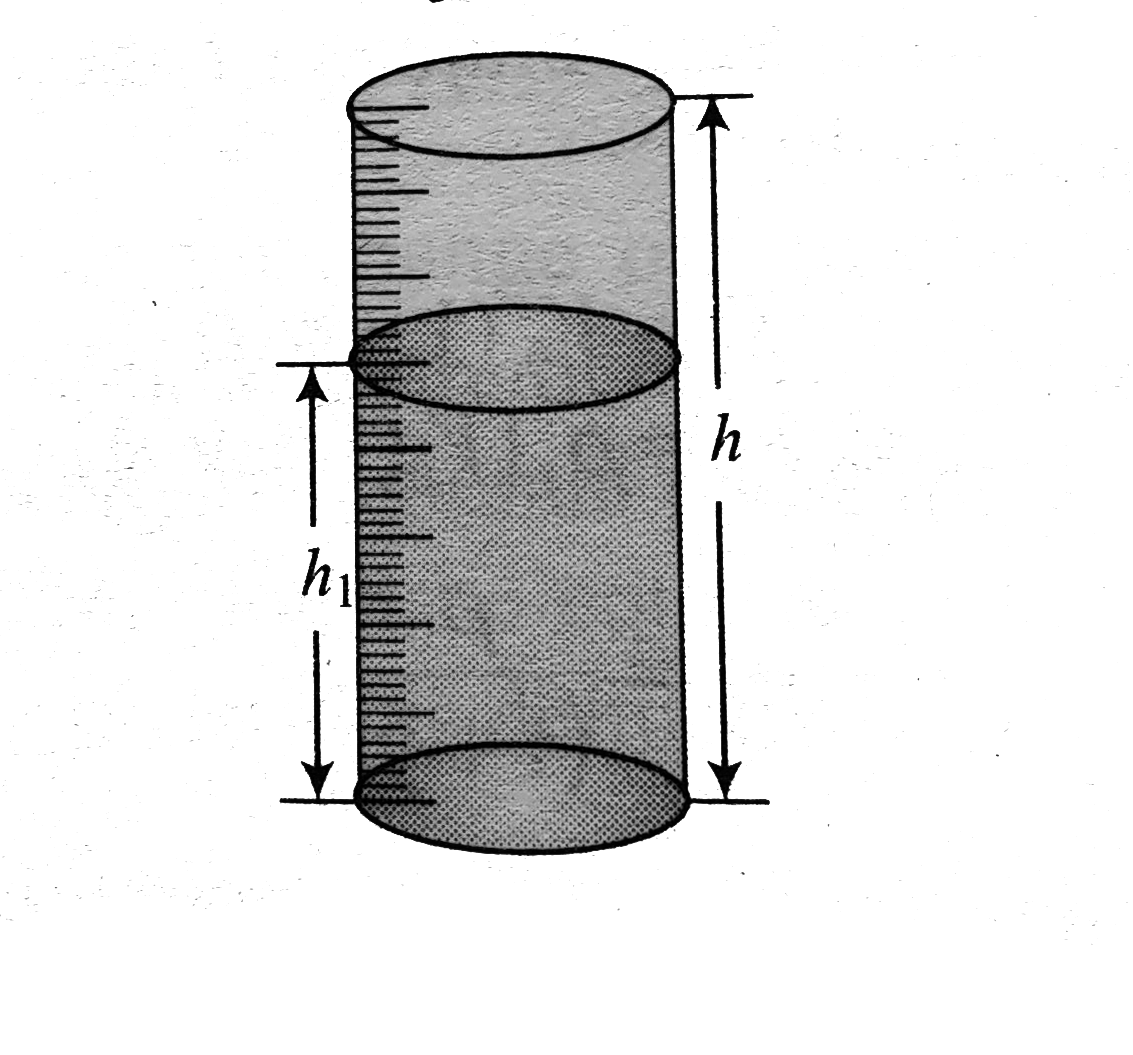Consider a cylindrical container of cross-section area A length h and having coefficient of linear expansion . The container is filled by liquid of real expansion coefficient up to height . When temperature of the system is increased by then
(a). Find out the height, area and volume of cylindrical container and new volume of liquid.
(b). Find the height of liquid level when expansion of container is neglected.
(c). Find the relation between and for which volume of container above the liquid level
(i) increases
(ii). decreases
(iii). remains constant.
(d). On the surface of a cylindrical container a scale is attached for the measurement of level of liquid of liquid filled inside it. If we increase the temperature of the temperature of the system by , then
(i). Find height of liquid level as shown by the scale on the vessel. Neglect expansion of liquid.
(ii). Find the height of liquid level as shown by the scale on the vessel. Neglect expansion of container.

On increasing the temperature, the height area of cross section and volume of the cylinder will increase.
(a). New height
New area of cross section
New volume of container
New volume of liquid
(b). The height of liquid level when expansion of container is neglected
(c). The initial volume of container above the liquid.
final volume of container above the liquid
If volume of above container increases
Which gives
Similarly, we can prove if the volume above container decreases, then and for no change in volume 3 h
(d). The area of container will increase, the area of container at this temperature will be
As liquid does not expand the volume of the liquid wll be as initial volume
Hence height of the liquid column will be
)=)=
. In this case we are neglecting the expansion of container. The volume of liquid at this temperature ))Ah_(1)(1+gamma_(L)Deltatheta)
h_(f)(V_(omega))/(A)(Ah_(1)(1+gamma_(L)Deltatheta))/(A)h_(f)h_(1)(1+gamma_(L)Deltatheta))/(A)h_(f)h_(1)(1+gamma_(L)Deltatheta)
Topper's Solved these Questions
- CALORIMETRYBOOK - CENGAGE PHYSICS ENGLISHCHAPTER - CALORIMETRYEXERCISE - Exercise 1.1
23 Videos
- CALORIMETRYBOOK - CENGAGE PHYSICS ENGLISHCHAPTER - CALORIMETRYEXERCISE - Exercise 1.2
22 Videos
- BASIC MATHEMATICSBOOK - CENGAGE PHYSICS ENGLISHCHAPTER - BASIC MATHEMATICSEXERCISE - Exercise 2.6
20 Videos
- CENTRE OF MASSBOOK - CENGAGE PHYSICS ENGLISHCHAPTER - CENTRE OF MASSEXERCISE - INTEGER_TYPE
1 Videos
Similar Questions
Relate the thermal coefficient of linear expansion, α, the the thermal coefficient of area expansion β.
View SolutionCan we related the thermal coefficient of linear expansion, α, to the thermal coefficient of volume expansion?
View SolutionOn heating a liquid having coefficient of volume expension α in a container having coefficient of linear expansion α/2, the level of the liquid in the container would
View SolutionRatio among linear expansion coefficient (c), area expansion coefficient (B) and volume expansion coefficient (Y) is
View SolutionA metal rod of length l, cross-sectional area A, Young's modulus Y and coefficient of linear expansion α is heated to t∘C. The work that can be performed by the rod when heated is
View SolutionA liquid with coefficient of volume expansion γ is filled in a container of a material having coefficient of linear expansion α . If the liquid overflows on heating, then
View SolutionA liquid with coefficient of volume expansion γ is filled in a container of a material having coefficient of linear expansion α . If the liquid overflows on heating, then
View SolutionA solid cube is first floating in a liquid. The coefficient of linear expansion of cube is α and the coefficient of volume expansion of liquid is γ. On increasing the temperature of (liquid + cube) system, the cube will sink if

View SolutionThere are two rods of length l1 and l2 and coefficient of linear expansions are α1 and α2 respectively.
Find equivalent coefficient of thermal expansion for their combination in series.
View SolutionIf two rods of length L and 2L having coefficients of linear expansion α and 2α respectively are connected so that total length becomes 3L, the average coefficient of linear expansion of the composite rod equals
View Solution
